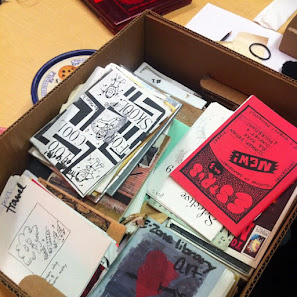Pricey Bits
Would you pay several million dollars for a digital image? For a video clip? For a tweet? If not, well, today's art market may be no place for you.
The buzziest thing in art and tech right now is NFTs, or Non-Fungible Tokens. What are they?
 |
| They are not, sadly, pogs. |
Non-fungible basically means "unique." You cannot trade a non-fungible item for an identical item. Dollar bills are fungible, but the Mona Lisa is not. NFTs are digital objects that cannot be replicated.
But wait, you may say, digital objects virtually exist to be replicated. I can right-click on a .jpg of the Mona Lisa and have my own .jpg that is literally identical. Ubiquitous illicit copies of everything from movies to video games are the bane of big media companies. So, what's the deal?
Here's the deal. There's this cryptocurrency called Etherium, which is like Bitcoin except you've never heard of it. Etherium uses blockchain technology. No one can agree on what blockchain is, exactly, but it involves keeping an eternal record of every transaction involving a cryptocurrency, forever and ever, or until servers crash and/or bit rot sets in.
If you have a digital thing and want to sell it, you can pay a company to use the Etherium blockchain to "mint" it as an NFT. The thing you minted will be exactly like any copy made from it -- except for the fact that the code that makes up your NFT will contain data that says you own it.
Yippee, you say. Big whoop. I can get NyanCat off the internet for free, so why should I pay for it? Bragging rights?
That's one reason. After all, why pay millions for the first Batman comic when pristine reprints abound? Because it's rare.
Another potential reason: You may want to support artists, who can make NFTs and sell them without having to pay middlemen like galleries and agents. Also, thanks to the blockchain, every time a particular NFT changes hands, the artist gets a percentage of the value of the sale. It's like every sale brings the artist new royalties.
Hooray! say artists, especially the guy who just sold a .jpg for $69,300,000. Wanna see it?
 |
| You now owe me $69.3 million. (Just kidding.) |
Anything digital can be made into a nifty new NFT, and many have sold for huge sums: $590,000 for NyanCat, $230+ million for NBA clips, $5 million for digital Pokemon cards featuring a YouTube annoyance. The first Tweet -- "just setting up my twttr" -- is up for auction and is expected to fetch $2.5 million or more. It has never been so easy to sell so few bits for so much money.
Even if you think it makes sense to shell out major ducats for bragging rights to a digital "object," there are reasons to be wary of NFTs. Cryptocurrencies are highly volatile, so even if Etherium becomes as established as IBM (which seems unlikely), the value of your NFT may fluctuate quite a lot. There is no way to stop an artist from minting several NFTs of the same "object," thereby diluting the value of each one. And, believe it or not, NFTs are bad for the earth, since blockchain transactions require a ridiculous amount of electricity (don't ask).
All of this stuff is so abstract and weird, it might cause a person to think about doing something fungible.


Comments
Post a Comment